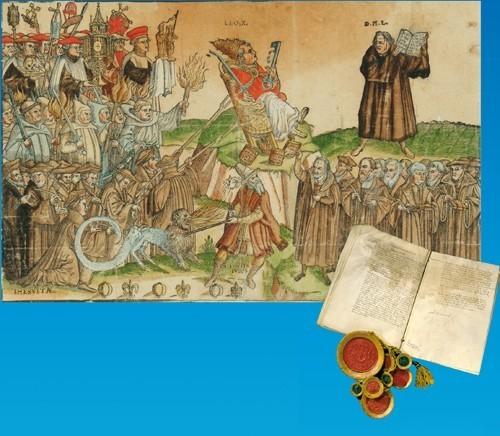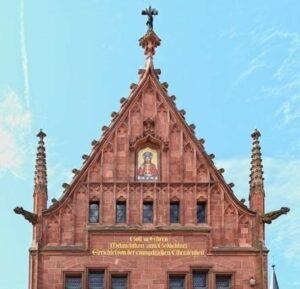The Catholic and Lutheran churches separate
Charles V saw it as his duty to restore church unity. The peaceful path that Melanchthon had embarked upon in the Augsburg Confession was not practicable. The emperor threatened the supporters of the Reformation with violence.
Yet the Protestant princes and imperial cities were not willing to do so. In 1531 they forged a defence alliance in Schmalkalden and professed the Augsburg Confession. This Confession became, against their original intention, the birth certificate of church division. In the empire several Protestant regional churches arose alongside the Church of Rome.
Charles V implement his threat to resort to force as of 1546. In the war the Schmalkaldic League suffered a decisive defeat in 1547. Nevertheless it was not possible for the emperor to extinguish the Reformation. In 1555 he had to recognise the existence of the Lutheran regional churches in the Peace of Augsburg. The emperor remained the worldly lord of the empire but the princes received the right to determine the confessions of their regional churches. From then on the empire was also divided in terms of the law governing church-state relations.
From 1555 Roman Catholics and Lutherans were strongly divided. They seemed unable to communicate without engaging in polemics. Europe’s unity now continued its inexorable decline.



